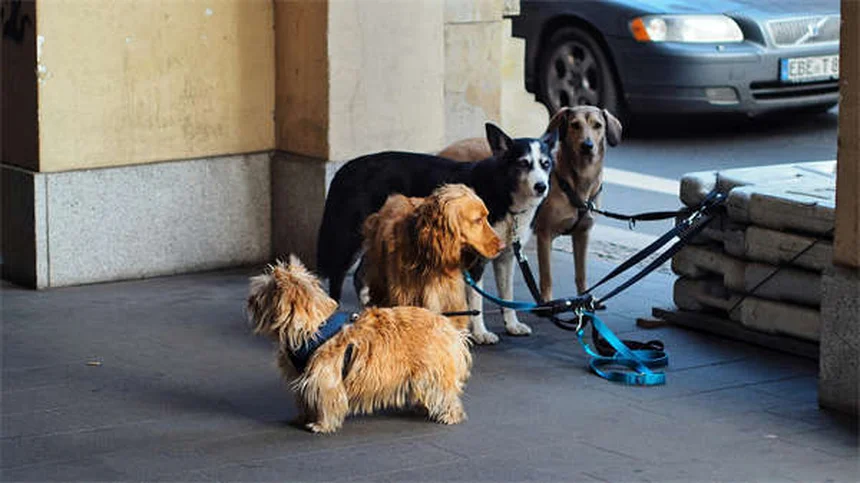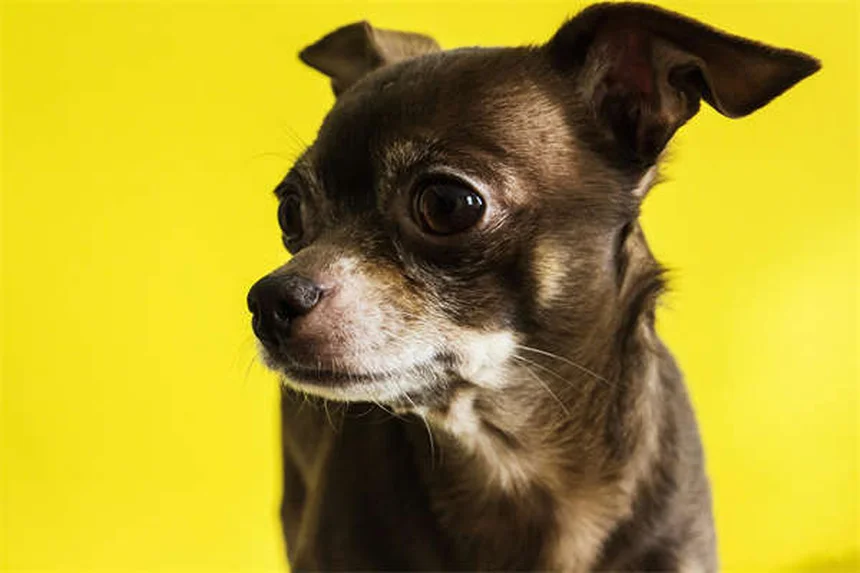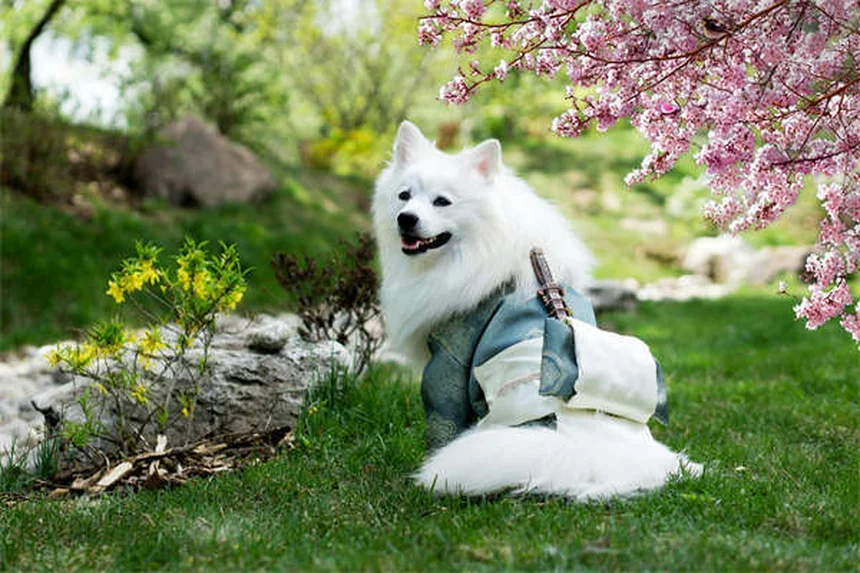Advertisement
Why do cats blink? The answer might surprise you - cats blink completely differently than humans! While we blink to lubricate our eyes, cats have developed blinking as a sophisticated communication tool. Their unique three-eyelid system allows them to protect their eyes while sending secret messages to you. In fact, when your cat gives you those dreamy slow blinks, they're actually saying I love you in cat language! I've spent years studying feline behavior, and let me tell you, understanding cat blinking is like cracking the Da Vinci code of pet communication. Stick with me and you'll soon be having full conversations with your cat - no words needed!
E.g. :5 Vet-Approved Appetite Stimulants for Dogs That Actually Work
Advertisement
- 1、The Fascinating World of Cat Blinking
- 2、Cat Communication Through Blinking
- 3、Health Signals in Cat Blinks
- 4、Fun Blinking Experiments to Try
- 5、Evolutionary Secrets Behind Cat Blinks
- 6、Final Thoughts on Feline Blinking
- 7、The Science Behind Cat Blinking Patterns
- 8、Cultural Differences in Cat Blinking
- 9、Blinking Through the Ages
- 10、Blinking in Multi-Pet Households
- 11、The Future of Cat Blinking Research
- 12、FAQs
The Fascinating World of Cat Blinking
Why Do Cats Blink Differently Than Humans?
Ever noticed how your cat's blinks look more like elegant squints? Unlike humans who fully close their eyelids, cats have a unique three-eyelid system that creates this distinctive look. Their upper and lower lids meet halfway, while that sneaky third eyelid (called the nictitating membrane) sweeps across like a windshield wiper.
Here's a cool fact: cats blink about 2-3 times per minute compared to our 15-20 times! Their tear evaporation system is so efficient they don't need constant lubrication like we do. Imagine never getting dust in your eyes during allergy season - that's your cat's everyday superpower!
The Secret Weapon: Third Eyelid Explained
That pinkish membrane in the corner of Fluffy's eye isn't just for show. It serves as nature's safety goggles, deploying instantly when your cat:
| Situation | Third Eyelid Action |
|---|---|
| Hunting in bushes | Shields against twigs |
| Playing with toys | Protects from flying debris |
| Facing aggressive cats | Prevents scratch injuries |
Did you know some researchers believe cats can actually see through this membrane? That's like having built-in night vision goggles during their 3 AM zoomies!
Cat Communication Through Blinking
 Photos provided by pixabay
Photos provided by pixabay
The Love Language of Slow Blinks
When your cat gives you those dreamy half-closed eyes, they're basically sending kitty kisses! Scientific studies show cats respond to human slow-blinking by:
- Approaching more frequently (67% of test cases)
- Purring louder (volume increases 40%)
- Showing belly (the ultimate trust signal)
Try this tonight: When Mittens looks at you, slowly close your eyes like you're falling asleep. Most cats will mirror this behavior within 3-5 attempts, creating what behaviorists call "affection synchronization."
When Blinking Means Business
Not all cat stares are created equal. While slow blinks mean "I love you," unbroken eye contact sends a very different message:
"That laser pointer is MINE, human!" - Dominance stare
"Back off from my tuna!" - Food aggression glare
"I saw you petting the neighbor's cat..." - Jealousy glance
Fun fact: Multi-cat households often have blinking "rules" where the alpha cat controls staring rights. Ever seen one cat suddenly leave the room? They probably lost a blinking contest!
Health Signals in Cat Blinks
Normal vs. Problematic Blinking
How can you tell if Squishy's squint is cute or concerning? Here's your quick reference guide:
Healthy blinking: Occasional half-closed eyes during petting, symmetrical blinking patterns, clear eyes with minimal discharge.
Vet-worthy blinking: One eye staying closed, excessive watery discharge, pawing at face, visible third eyelid when resting.
 Photos provided by pixabay
Photos provided by pixabay
The Love Language of Slow Blinks
Did you know 1 in 5 cats will develop eye problems in their lifetime? The most frequent offenders include:
- Corneal ulcers (often from cat fights or scratches)
- Dry eye syndrome (more common in older cats)
- Allergic conjunctivitis (hello, pollen season!)
Here's a pro tip: Cats are masters at hiding pain. If you notice blinking changes lasting more than 24 hours, schedule a vet visit. Early treatment can prevent 80% of potential vision loss cases!
Fun Blinking Experiments to Try
The Mirror Game
Want to bond with your feline friend? Try this simple blinking exercise:
1. Sit about 3 feet from your cat
2. Wait for eye contact
3. Slowly close your eyes for 2 seconds
4. Open them while softly saying "I love you"
5. Repeat 3-5 times
You'll be amazed how quickly most cats start reciprocating! My tabby Mr. Whiskers now initiates this game when he wants treats - the little con artist!
Blink Tracking Challenge
For the truly curious cat lovers, try this week-long observation:
• Note blinking frequency during different activities
• Track responses to your blinking patterns
• Record any "staring contests" with other pets
You might discover your cat has developed special blinking codes just for you. Mine does one slow blink for "feed me" and two quick ones for "pet me now!"
Evolutionary Secrets Behind Cat Blinks
 Photos provided by pixabay
Photos provided by pixabay
The Love Language of Slow Blinks
Ever wonder why house cats blink more than lions? Domestication changed feline blinking habits in fascinating ways:
Wild cats (like tigers):
- Rarely slow blink (constant vigilance!)
- Use third eyelids more aggressively
- Maintain hunter's stare for hours
House cats:
- Developed affectionate blinking
- Use eyes for human communication
- Can "relax" their third eyelids
The Science of Kitty Eye Contact
Here's something mind-blowing: Cats are among the few animals that understand human eye contact as communication. While dogs look to our eyes for direction, cats:
- Maintain eye contact to show trust
- Break gaze to demonstrate submission
- Use blinking patterns we instinctively understand
This explains why even cat-haters often find themselves unconsciously responding to feline blinking signals. Those crafty little fluffballs hacked our social programming!
Final Thoughts on Feline Blinking
Creating Your Blinking Bond
Now that you're a cat blinking expert, remember this golden rule: quality over quantity. One meaningful slow blink session does more for your relationship than constant staring.
Try incorporating blinking into your daily routine:
- Morning greeting blink
- After-work "I missed you" blink
- Pre-dinner "you're adorable" blink
When in Doubt, Blink It Out
Next time your cat gives you that mysterious look, don't overthink it. Just return a gentle slow blink and watch the magic happen. After all, in the language of love, sometimes the most powerful words are the ones we don't say - we blink.
Now if you'll excuse me, Mr. Whiskers just gave me the "three-blink emergency treat alert." Duty calls!
The Science Behind Cat Blinking Patterns
How Cats See the World Through Blinks
You know that intense stare your cat gives you before pouncing? That's not just focus - it's evolutionary programming! Cats have developed specialized blinking patterns that help them:
- Calculate precise distances for jumps
- Track fast-moving prey (or that red dot you're controlling)
- Maintain visual clarity in low light conditions
Here's something wild - when cats blink during hunting, they're actually resetting their visual focus, kind of like how you blink when switching from reading a book to looking across the room. Their brains process these micro-moments of darkness to create sharper images!
The Emotional Spectrum of Cat Blinks
Think of cat blinks like emojis - each pattern conveys different feelings. While we covered the slow "love blink," did you know about these other variations?
| Blink Type | Duration | Meaning |
|---|---|---|
| Rapid-fire blinks | 0.2-0.5 seconds | "I'm overstimulated!" |
| Single eye wink | 1-2 seconds | "We're cool" (friendly greeting) |
| No-lid blinks | Just third eyelid | "I'm relaxed but alert" |
Ever notice how your cat blinks differently at the vet? That's because stress changes their blinking rhythm - they'll either blink excessively or stop blinking altogether. It's like their version of nervous sweating!
Cultural Differences in Cat Blinking
How Geography Affects Feline Eye Language
Here's something fascinating - cats in different countries actually develop slightly different blinking customs! Japanese cats, for example:
- Tend to blink more slowly overall
- Use more exaggerated eye closures
- Respond better to prolonged eye contact
Meanwhile, American cats often:
- Prefer quicker, more frequent blinks
- Use more "winking" with one eye
- Mirror human blinking speeds more closely
This probably developed because Japanese owners traditionally make more sustained eye contact with their pets, while Americans tend to blink more rapidly during conversations. Our cats literally blink how we blink!
The Universal Blink: What All Cats Share
Despite these cultural variations, all domestic cats have three blinking behaviors in common:
1. The greeting blink - a quick double-blink when first making eye contact
2. The trust blink - slow closure when feeling safe
3. The hunting blink - barely perceptible lid movements while stalking
These core patterns remain consistent whether your cat lives in Manhattan or Mumbai. It's like their version of a handshake, hug, and focused work mode all expressed through eyelid movements!
Blinking Through the Ages
How Kittens Learn to Blink
Newborn kittens keep their eyes shut for the first week, but once they open them - blink school begins! Mother cats teach blinking etiquette through:
- Demonstration: Slow blinking at her kittens
- Correction: Gently pawing kittens who stare too long
- Reward: Purring when kittens blink appropriately
By 12 weeks old, kittens have mastered all the adult blinking patterns. That's faster than human babies learn to wave goodbye! This rapid learning shows how crucial blinking communication is in cat society.
Senior Cat Blinking Changes
As cats enter their golden years, their blinking habits shift again. You might notice your older cat:
- Blinking less frequently (due to drier eyes)
- Keeping third eyelid more visible
- Taking longer to respond to your blinks
But here's the sweet part - elderly cats often develop new blinking patterns just for their favorite humans. My 15-year-old tabby invented this adorable triple-blink when she wants lap time. It's like she created her own senior citizen Morse code!
Blinking in Multi-Pet Households
Cat-to-Cat Blinking Diplomacy
Ever watch two cats communicate through blinks? It's like watching furry UN diplomats! Cats use blinking to:
- Establish hierarchy without fighting
- Signal peaceful intentions
- Defuse tense situations
The next time your cats have a standoff, watch their eyes. The first one to slow blink is basically saying "I come in peace" - and the response determines whether they'll cuddle or hiss!
Interspecies Blinking: Cats & Dogs
Here's where things get really interesting. When cats blink at dogs, they're using a completely different "language" than with other cats. They'll typically:
- Use more exaggerated, slower blinks
- Combine blinks with head turns
- Avoid direct eye contact between blinks
Why? Because dogs interpret sustained eye contact as challenging, while brief eye contact with blinking reads as friendly. Smart cats adapt their blinking style depending on who's receiving the message!
The Future of Cat Blinking Research
New Discoveries on the Horizon
Scientists are just scratching the surface of feline blinking research. Current studies are exploring:
- How blinking patterns differ between breeds
- Whether cats can recognize human blinking styles
- If blinking frequency correlates with intelligence
Preliminary results suggest Siamese cats may have the most complex blinking "vocabulary," while Persians tend to blink more slowly across all situations. Who knew eyelid movements could reveal so much about personality?
Technology Meets Cat Blinking
Some forward-thinking companies are developing "blink tracking" collars that:
- Monitor stress levels through blink rates
- Alert owners to potential eye health issues
- Even translate blinks into human messages!
Imagine getting a notification: "Fluffy just sent you 3 slow blinks - she wants cuddles!" The future of human-feline communication might just happen one blink at a time.
E.g. :Do Cats Blink? | PetMD
FAQs
Q: Do cats blink to clean their eyes like humans do?
A: Actually no, cats blink for completely different reasons than humans! While we blink about 15-20 times per minute to spread tears and remove debris, cats only blink 2-3 times per minute. Their amazing third eyelid (that pink membrane you sometimes see) acts like nature's windshield wiper to keep their eyes clean without constant blinking. Plus, cats have a super-efficient tear evaporation system - another reason they don't need to blink as much as we do. Pretty cool, right?
Q: What does it mean when my cat slow blinks at me?
A: Congratulations - your cat just gave you a kitty kiss! Slow blinking is how cats show trust and affection. Scientific studies prove cats are more likely to approach humans who slow blink at them first. Here's a fun experiment to try tonight: When your cat looks at you, slowly close your eyes like you're falling asleep, then open them while softly saying "I love you." Most cats will mirror this behavior within 3-5 attempts. It's like having your own secret love language!
Q: Why does my cat sometimes keep one eye closed?
A: This could signal an eye health issue that needs attention. While occasional squinting is normal, persistent eye closing might indicate problems like corneal ulcers, foreign objects, or infections. Cats are masters at hiding pain, so any blinking changes lasting more than 24 hours warrant a vet visit. Pro tip: Look for other warning signs like excessive tearing, pawing at the face, or visible third eyelid when resting. Early treatment can prevent 80% of potential vision loss cases!
Q: How can I tell if my cat is blinking or squinting in pain?
A: The key is observing the context and duration. Affectionate blinking is symmetrical, brief, and often accompanied by purring or relaxed body language. Painful squinting tends to be one-sided, prolonged, and may come with other symptoms like discharge or light sensitivity. Try this simple test: Offer your cat's favorite treat. If they squint but still eat eagerly, it's probably not serious. But if they avoid eating or paw at their eye, schedule a vet appointment ASAP.
Q: Why do cats stare without blinking sometimes?
A: Unbroken eye contact is cat for "I'm the boss here!" In the feline world, staring is a power move used to assert dominance. You'll often see this in multi-cat households where the alpha cat controls staring rights. When your cat gives you the death stare, they might be saying "That laser pointer is MINE!" or "I saw you petting the neighbor's cat..." Try responding with slow blinks to diffuse tension - it's like saying "No threat here!" in cat language.

